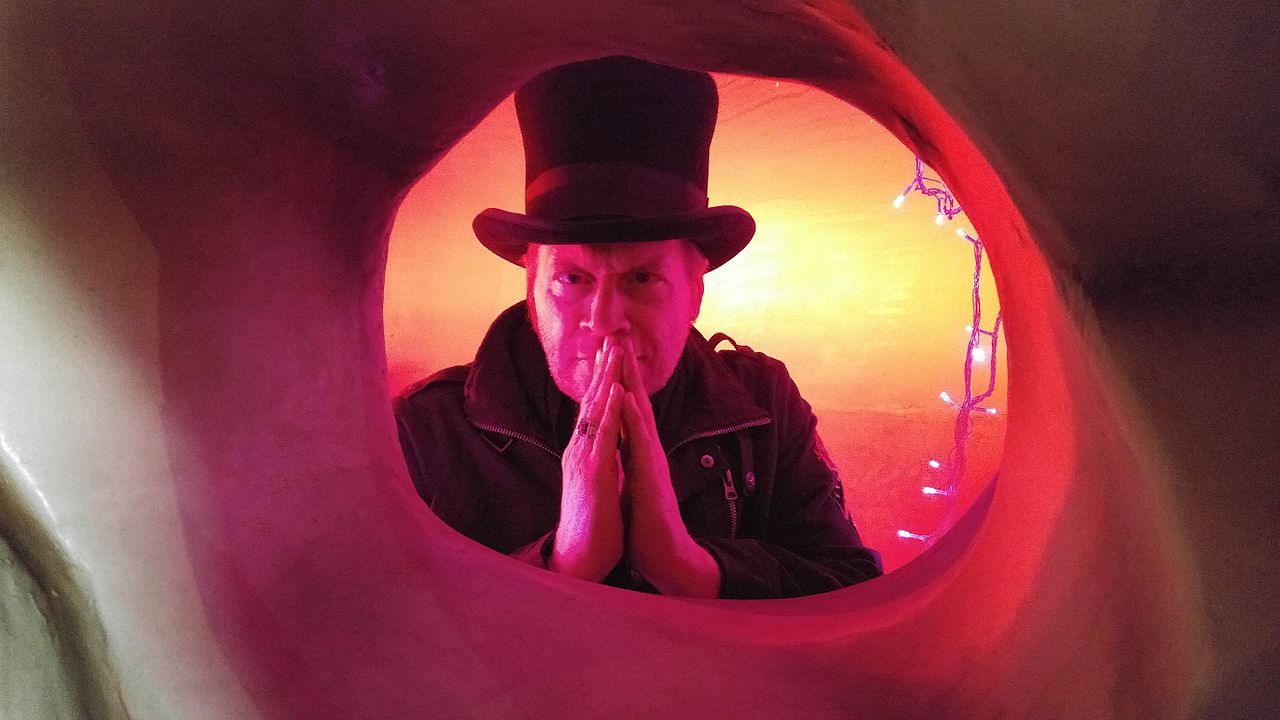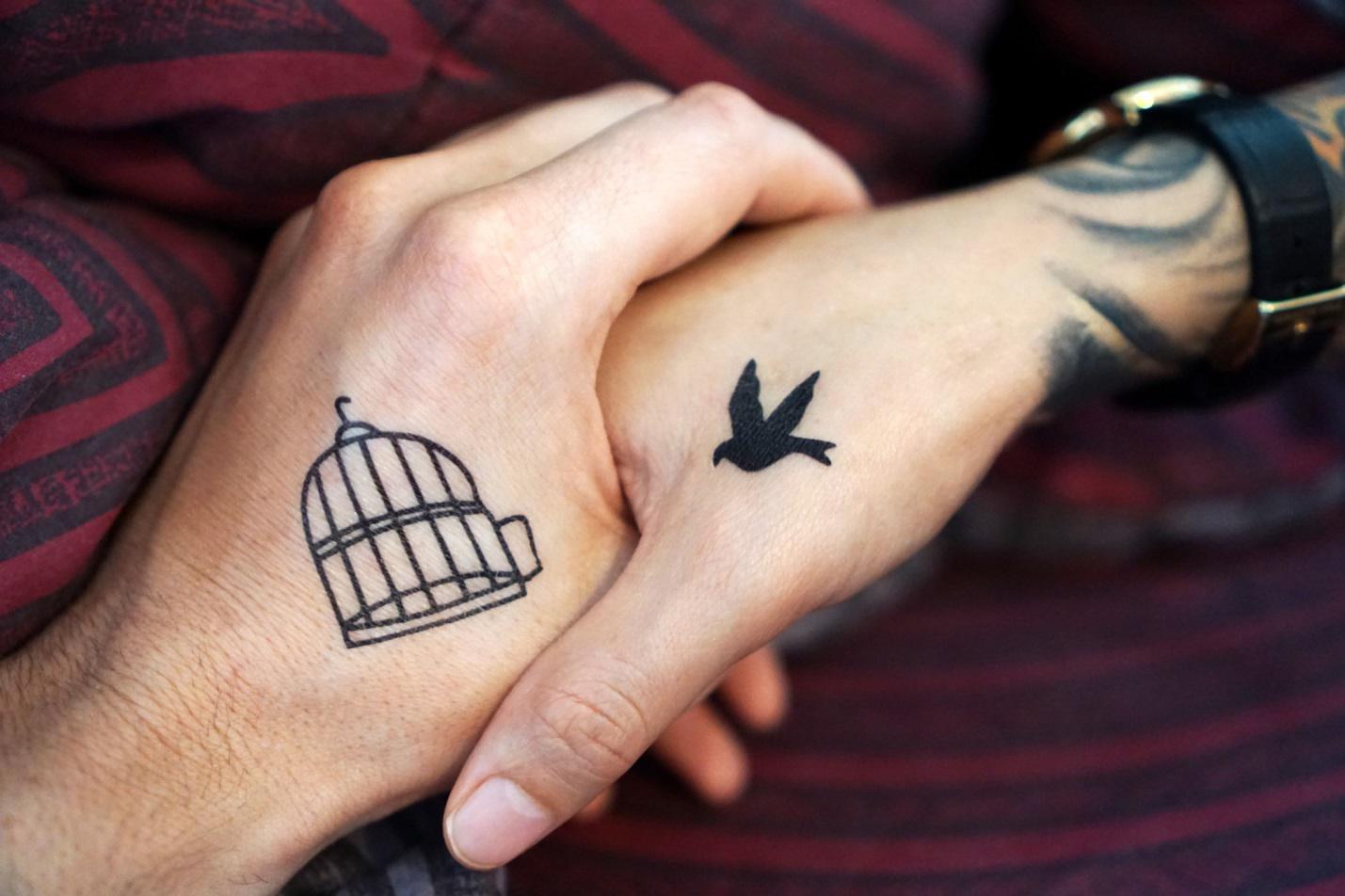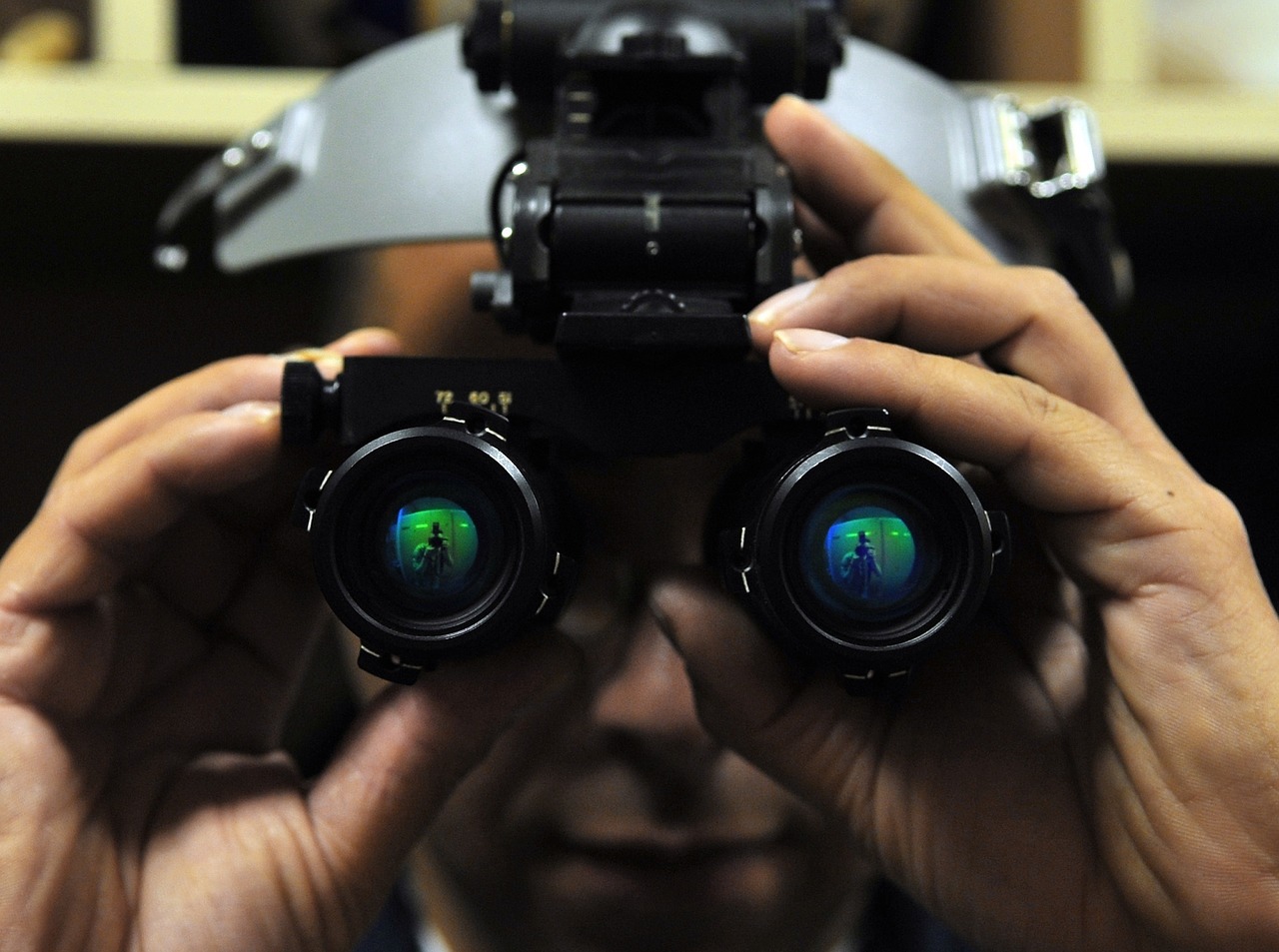Continued From Page 2
Entries 1 – 5
5. Rhythm Club Fire
Natchez, Mississippi
April 23, 1940
Death Toll: 209
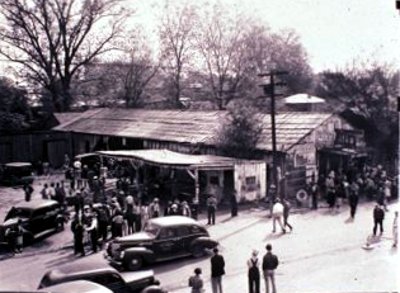
Rhythm Club, Natchez, Mississippi
This happened back in 1940. The Rhythm Club was a dance hall in Natchez, Mississippi, a wood framed structure on Catherine St. where patrons, mostly African-American, gathered to watch a performance by Walter Barnes and His Royal Creolians. It is said that somebody discarded a match, which lit up some Spanish moss that was decorating the rafters. The moss had been sprayed with insecticide, which generated methane gas. The whole building was gone within the hour.
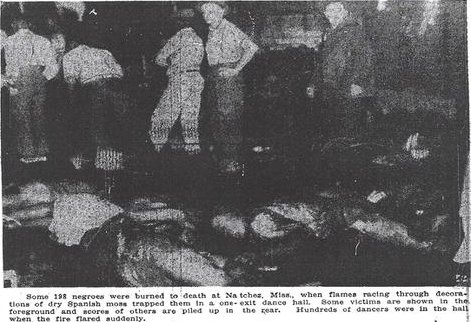
As usual, possible escape exits were blocked so that outsiders couldn’t get in without paying. In this case, even the windows were boarded up, so people couldn’t peek inside. In the end, 209 people were killed from smoke, burns, and trampling. Most members of the Royal Cerolians died, including Walter Barnes. It is said that Barnes told his band to continue playing the song “Marie” to keep the crowd from stampeding out in a panic. After the tragedy, drummer Walter Brown swore never to play again. The Rhythm Club Fire has inspired a number of songs which recall the event, from artists like Howlin’ Wolf and John Lee Hooker. A museum about the fire opened in 2010, and a documentary has just been completed.
Source: Wikipedia, Gen Disasters, Mississippi Blues Trail
4. Fuxin Discothèque Fire
Fuxin, China
November 27, 1994
Death Toll: 234
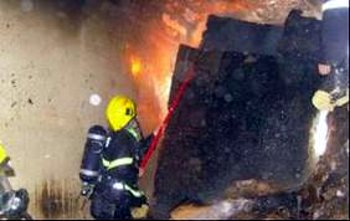
In late November, 1994, a fire broke out at the Art Palace discotheque in Fuxin (Liaoning province). Young people, from teens to 20s, were dancing their Sunday away when Xing Shengli lit a cigarette with a piece of burning newspaper and discarded it under a sofa. The fire spread, killing 234 people, including Xing. Officials said most of the victims were found piled in layers four deep near the only exit. Managers of the club were arrested and the city mayor was removed from his post.
Further information about this fire is scarce.
Source: ITN, Deseret News
3. Kiss Club Fire
Santa Maria, Rio Grande do Sul, Brazil
January 27, 2013
Death Toll: 236
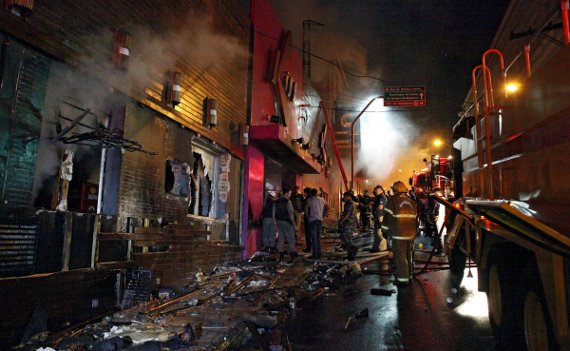
This horrible disaster that occurred in Santa Maria, Brazil has so far resulted in 236 deaths, although that number may change given that the tragedy is so recent. Being that Santa Maria is such a huge college town, local students from the nearby colleges created the Agromerados party which occurred on Saturday, Jan 26th, 2013, featuring performances by Pimenta e seus comparsas and Gurizada Fandangueira.
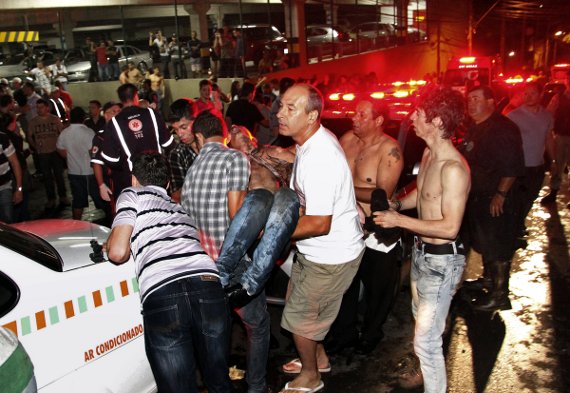
It is reported that around 2:30am, Gurizada Fandangueira started using pyrotechnics that were only supposed to be used for outdoor use, but because indoor flares were so expensive, the band only paid for the cheaper, outdoor ones. A spark from one of these flares ignited the flammable insulating foam in the ceiling, which spread extremely quickly throughout the club. (Somebody tried to use a fire extinguisher but it didn’t work). In addition, the Kiss club had no alarms or sprinker systems, and there was only one functional exit.
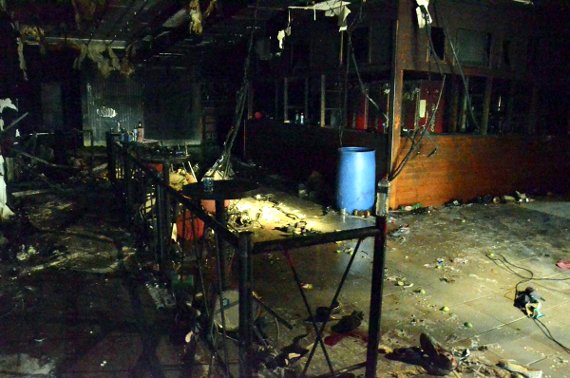
The heavy, toxic smoke caused a panic rush, with some 50 of the victims getting trapped in the bathrooms, because through the thick smoke, they mistook the bathroom doors for exits. To make matters much worse, the front nightclub door was locked because security guards were worried about people leaving without paying their bill. Firefighters would discover “a barrier of bodies” blocking the club entrance. Most of the deaths were from smoke inhalation. Currently, 126 people are still in the hospital as of February 6, 2013. This fire marks the 2nd highest death toll from an entertainment event in the country of Brazil, the first being the Niterói circus fire of 1961, in which at least 500 people died. The investigation into the Kiss Club fire continues.
Sources: NBC, Huffington Post, Reuters, Yahoo News
2. Luoyang Christmas Fire
Luoyang, Henan, China
Christmas Day – December 25, 2000
Death Toll: 309
The second deadliest nightclub fire is also one with a limited amount of information, coming from China, but more details exist than the 1994 tragedy in Fuxin. It is also an oddity because the cause of the blaze is not typical for a club/bar fire. In this case, the Dongdu building, located in Luoyang (Henan province), was a department store in the old urban area of the city. The building also had a dance hall on the 4th floor, which is where patrons were attending a Christmas day gala celebration. The dance hall was said to be illegally operated.
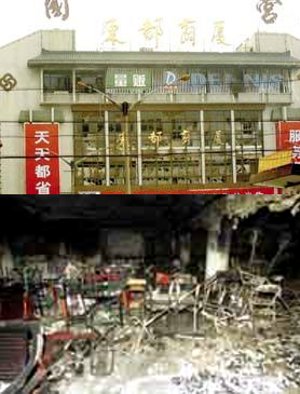
Dongdu Building Fire
A construction crew was working on the 2nd and 3rd floors at the time of the party. Apparently, four welders accidentally sparked a fire that sent smoke upwards towards the disco. The building had no smoke detectors or fire alarms, and people in the disco panicked when smoked started to fill the room. The emergency exit was locked, elevators didn’t work, and the windows were too small to get out through. Some people jumped off the balcony to escape. When it was over, 309 people lay dead.
The Dongdu Building had failed fire safety inspections repeatedly over the past few years leading up to the tragedy, having been ranked as one of the 40 most dangerous buildings in Henan.
Twelve people, including the welders (who apparently fled without telling anybody about the fire) were arrested.
Source: People’s Daily, St. Augustine Record, WSWS
1. Cocoanut Grove Fire
Boston, Massachusetts
November 28, 1942
Death Toll: 492
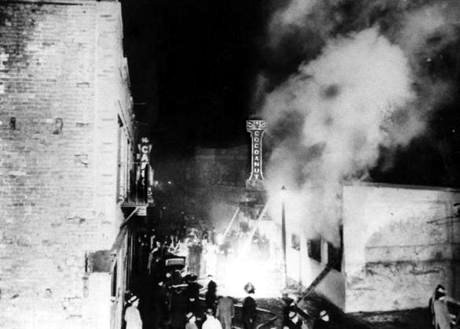
The worst nightclub fire in history happened at the Cocoanut Grove in Boston. The date was November 28, 1942, and World War II was in full swing. The Cocoanut Grove was an immensely popular nightclub spot on Piedmont that was a speakeasy and hangout for gangs/bootleggers in prohibition days. Customers entered a “tropical-like” environment, complete with fake palms, bamboo, and even a roof that could be removed on summer days. The place was owned by Barney Welansky, a guy with mob ties and some influence with Boston’s mayor at the time – Maurice Tobin. It should surprise nobody that Welansky cared not a whit about fire safety, blocking exits so that customers wouldn’t sneak out without paying their tab (one was even bricked up).
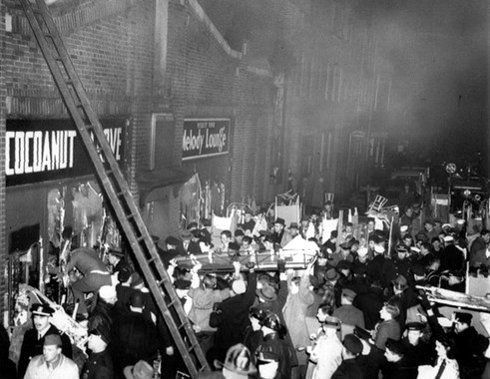
It was Thanksgiving weekend, and over a thousand people crammed inside the club only meant to hold less than half that amount. Sometime after 10pm, in the Melody Lounge, something ignited some artificial palm fronds (which were very flammable). It is said that the fire began when 16 year old busboy Stanley Tomaszewski lit a match to try to locate a fallen lightbulb. The fire grew quickly, making it over to the wall decorations and ceiling (which had cloth draperies decorating it).
Flames raced up the stairway to the main level, burning the hair of patrons stumbling up the stairs. A fireball burst across the central dance floor as the orchestra was beginning its evening show. Flames raced through the adjacent Caricature Bar, then down a corridor to the Broadway Lounge. Within five minutes, flames had spread to the main clubroom and the entire nightclub was ablaze.
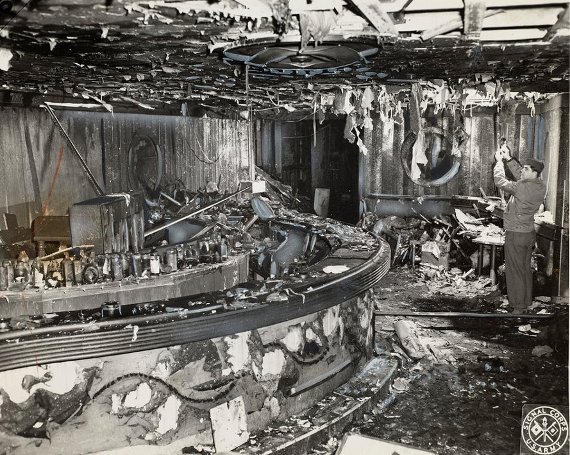
As panicked partiers tried to race out the front entrance at once, they ran into a bottleneck, made worse by the fact that the front entrance was a revolving door. Bodies piled up around the door, jamming it. Other avenues of escape were cut off – bolted exits, inward-opening doors, boarded windows. The scene was out of a horror movie – bodies burned beyond recognition, countless people dead from smoke inhalation and breathing toxic fumes. Some victims were found by firefighters still sitting with drinks in hand, having been killed by fast-moving smoke.

Since the tragedy, in which 492 people lost their lives, new techniques for caring for burn victims were discovered. The newly discovered penicillin was used to treat the survivors. New safety standards were implemented, including bans on exits that swing inward, bans on certain kinds of decorations, mandatory visible exit signs, and other related changes. Barney Welansky was convicted of manslaughter and was sentenced to 15 years in prison. He served 4 years before the now-governor Tobin pardoned him. Soon after his release, he died of cancer.
Cocoanut Grove was the deadliest nightclub fire by far, but not the deadliest single-building fire. That title goes to the Chicago Iroquois Theatre fire from 1903, in which 602 people died.
Sources: Wikipedia, Boston Globe, Fire Survivors
Start Over From Beginning
